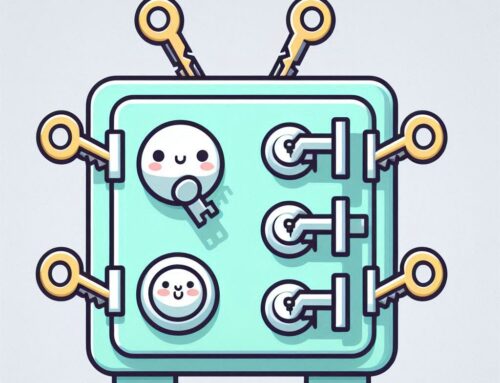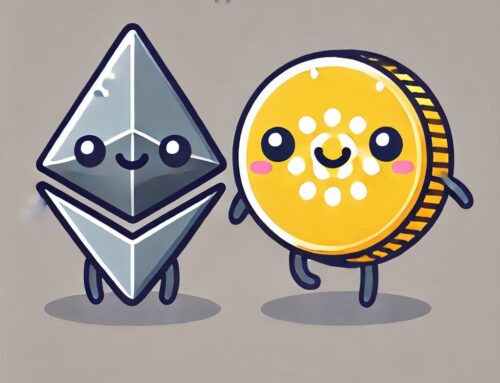Cardano Transactions: From Sending Love (and ADA) to Fueling a Blockchain Revolution!
Let’s unravel the mysteries of Cardano transactions! No, we’re not talking about your weekly grocery run (although, wouldn’t it be cool if you could pay for avocados with ADA at your local supermarket?). We’re talking about the digital lifeblood that keeps the Cardano network humming, powering everything from simple peer-to-peer transfers to complex smart contract interactions.
Think of them like the tiny worker bees in a bustling digital hive, constantly moving value and data from one place to another. Every interaction on Cardano, whether it’s sending some ADA to a friend, buying a digital collectible, or interacting with a decentralized application, all starts with a Cardano transaction. So, get ready for a deep (but not too deep) dive into the world of Cardano transactions.
What Exactly Is a Cardano Transaction, Anyway? (Beyond the Jargon!)
Before we get lost in the weeds, let’s take a step back and define what a Cardano transaction actually is. In the simplest terms, a Cardano transaction is a signed record of a transfer of value or data from one address to another on the Cardano blockchain. It’s the fundamental unit of activity on the network.
-
A Record of Change (Like Writing in a Digital Diary!): A Cardano transaction is a permanent record of a change in the state of the blockchain. It’s like writing in a digital ledger, meticulously recording who sent what to whom, and when. It’s like a permanent record of who paid for lunch that day!
-
Signed and Verified (Like a Digital Fingerprint!): Cardano transactions are digitally signed by the sender using their private key, which serves as a guarantee that they are authentic and cannot be tampered with. It’s like having a unique digital fingerprint that proves who authorized the transaction, and makes it impossible for anyone to mess with the details.
-
Included in a Block (Locked in Time!): Once a Cardano transaction is validated, it’s included in a block and added to the blockchain, making it an immutable part of the network’s history. It’s like adding a new page to a history book, ensuring that the transaction is recorded for posterity, and can never be deleted.
Types of Cardano Transactions: More Than Just Sending ADA (It’s a Whole Ecosystem of Activity!)
Cardano supports a wide variety of transaction types, each designed for different purposes and enabling a wide range of activities on the network. It’s not just about simple payments, there’s actually much more going on behind the scenes! Here are some of the most common examples:
-
Simple ADA Transfers (The Bread and Butter!): The most common type of Cardano transaction is a simple transfer of ADA from one address to another. This is the foundation of the network. It’s like sending money from one bank account to another, just without the bank! These simple Cardano transactions are the bread and butter of the Cardano network.
-
Native Token Transfers (Beyond the Basic!): Cardano allows users to create and transfer their own custom tokens (native assets), which can represent anything from loyalty points to digital art, or even shares in a company. This is like sending gift cards or coupons from one person to another, but these digital tokens are secured on the blockchain. These Cardano transactions are one of the major advantages of the network.
-
Smart Contract Interactions (Automating the Agreements!): Cardano transactions can also interact with smart contracts, triggering their execution and creating new state changes on the blockchain, making the entire system more versatile. It’s like interacting with a vending machine, following the instructions encoded in the vending machine’s mechanism. These interactions are a core component of many dApps built on Cardano.
-
Metadata Transactions (Adding Extra Flair!): Cardano transactions can include metadata, which is additional information that can be attached to a transaction for various purposes, such as verifying documents or tracking the product’s journey through the supply chain. It’s like writing a note along with sending money, providing context or other important information, that gets recorded on the blockchain.
-
Staking Transactions (Securing the Network!): These Cardano transactions are used to delegate your ADA to a stake pool or to register your own stake pool, and help keep the network secure, and decentralized. It’s like enrolling in a program that helps secure the network, receiving rewards as an incentive, that is all managed through specific transaction types. These types of Cardano transactions are essential to how the network functions.
Breaking Down the Anatomy of a Cardano Transaction: What Makes It Tick?
A Cardano transaction is more than just a simple transfer of value; it includes various components that ensure its validity and functionality. Let’s take a closer look at the key elements that make up a Cardano transaction:
-
Inputs (Where the Funds Come From!): These are references to the unspent transaction outputs (UTXOs) that the sender is using to fund the transaction. Think of these as the bills and coins you are using to pay for something. It’s like identifying the precise source of your funds.
-
Outputs (Where the Funds Are Going!): These specify where the funds are being sent, including the recipient address and the amount of ADA or other assets. Think of these as the address where the payment needs to go, along with the exact amount being sent, and any other relevant information.
-
Transaction Fee (Paying for the Ride!): This is a small amount of ADA that is paid to the network for processing the transaction, incentivizing the network to process the transaction. It’s like the processing fee that a bank would take for transferring money between accounts.
-
Metadata (The Extra Details!): This allows users to attach additional information to the transaction, which can be used for various purposes, like proving the validity of a certain document, or ensuring compliance. It’s like a note that you can attach along with payment, providing more context or information.
-
Witness (The Digital Signature!): A digital signature created by the sender using their private key, verifying that the transaction is legitimate. It’s like signing a document that verifies your identity, and it’s needed to make the transaction valid.
Metadata: Adding a Whole New Dimension to Cardano Transactions
Metadata in Cardano transactions allows users to attach additional information to the transaction, which can be used for a surprisingly wide array of purposes:
-
Document Verification: Users can include hashes of documents to verify their authenticity, ensuring that important documents can be checked and validated.
-
Supply Chain Tracking: Companies can track products as they move through the supply chain, using Cardano transactions to create a verifiable log of every step in the process.
-
Digital Identity: Users can include information related to their digital identities, creating a secure and portable way to verify their identity online.
-
Custom Data: Developers can use metadata to build custom applications on the Cardano blockchain, enabling all kinds of innovative use cases.
Metadata is optional but provides a powerful tool to enhance the functionality and utility of Cardano transactions.
The Fee Factor: Calculating the Cost of a Cardano Transaction
Transaction fees in Cardano are calculated based on the size of the transaction, in bytes. They are not fixed but fluctuate based on network congestion and the demand for transactions, with a more congested network charging more for processing.
-
Minimum Fees (Paying the Minimum!): There is a minimum transaction fee that must be paid to have the transaction processed, regardless of the size or complexity of the transaction. It’s like having a minimum processing charge to use the network at all.
-
Fee Calculation Formula (The Math Behind the Cost!): The fee calculation formula is dynamic, ensuring that the network can adjust to changes in demand, in order to maintain a good rate of processing.
-
Prioritization (Not Really a Thing!): Cardano transactions are mostly processed first-come, first-served, rather than being ranked by the size of the fee.
How Cardano Transactions Move Across the Network: A Step-by-Step Journey
Here’s a step-by-step overview of how Cardano transactions move on the Cardano network from start to finish:
-
Initiation: A user creates a transaction using a wallet, which is an easy to use interface that allows users to construct complex transactions without any technical skill.
-
Signing: The user signs the transaction with their private key, using cryptography to prove that they authorized the transaction.
-
Broadcasting: The transaction is broadcast to the Cardano network, allowing nodes to see it.
-
Validation: Nodes on the network validate the transaction by verifying the signature, the inputs, and other data, and ensuring that the transaction is legitimate.
-
Inclusion in a Block: Validated transactions are included in a block by a slot leader.
-
Addition to Blockchain: The new block is added to the blockchain, solidifying the transaction, and making it permanent.
-
Confirmation: The transaction is confirmed, and the transfer of value or data is complete, which means the Cardano transaction is now part of the public record.
The Takeaway: Cardano Transactions – The Foundation of a Thriving Ecosystem
Cardano transactions are the fundamental units of activity on the Cardano network, enabling the movement of value, data, and interactions with smart contracts, and therefore forming the base of the Cardano ecosystem. By understanding transaction types, components, metadata, and fee calculations, you gain a deeper insight into how the Cardano network operates. It’s not just about sending digital assets; it’s about creating a dynamic and versatile ecosystem where various interactions are enabled through a secure and reliable transaction system, and where every Cardano transaction contributes to the overall health of the system.





